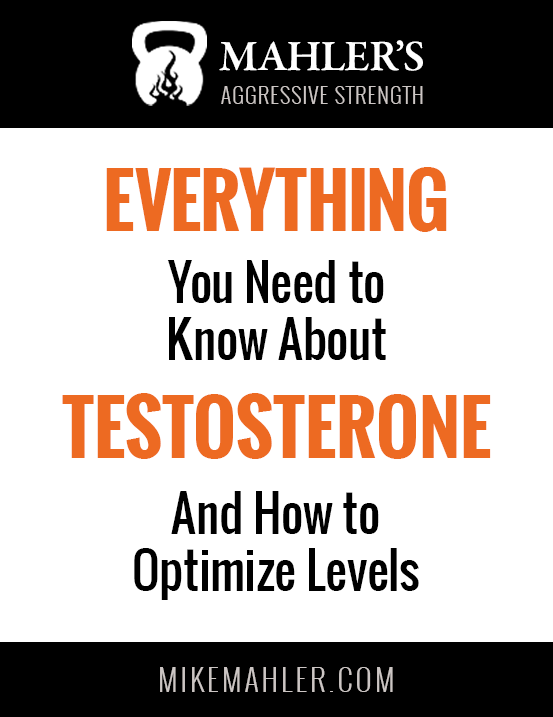By Steve Maxwell
One of the most frequently asked questions I get is, “What kind of workout should I be doing for MMA or BJJ?” This same question, of course, could apply to any sport.
Sometimes you’ll see magazine articles by strength coaches outlining workout programs for various sports and martial arts but I have a problem with this cookie-cutter approach: these programs end up being one-size-fits-all…but-me!
Creating workout programs is as much an art as it is science. Before slapping numbers into arbitrary sets and reps on paper you have to know something about the athletes with whom you’re working because, in many cases, the wrong exercise prescription can do more harm than good. Martial arts and grappling are especially strenuous activities and the people who participate in them tend to be extremists already prone to falling into the dreaded overtraining. Participation in these arts provide, for the most part, the specific conditioning needed for same, i.e., if you want to be a good grappler, you’ve got to grapple; if you want to be a good boxer, you’ve got to box, etc. The smart strength coach analyzes his athlete to find the chinks in his armor. For example, if I have a BJJ player demonstrating better-than-average flexibility, with good muscular endurance, but lacking strength, it makes no sense to put him on a yoga-based conditioning program or endurance training. What makes sense is to bring his absolute strength up as high as possible. By the same token, if I have a fighter with great strength but no gas, and worse, tight connective tissue, I’m going to put him on an endurance-building program and work on freeing up his joints and increasing his mobility. This is how it’s done, and following a program from a magazine may not suit your particular set of weaknesses. I want to work to the athlete’s weakness–not his strengths–and no two athletes should have the same exact program (unless they happen to be twins.)
I’m going to give you another example: a program I created for myself. I’ve been in Philly for the past month, training at Maxercise in BJJ and submission wrestling. The workouts have been brutal. Lots of sparring and live drills. In the team practice sessions, there are times when everyone in the room has placed in the top 3 in the world, in their respective categories–we’re talking about some truly elite training. As a 55-year old athlete, training with these kids takes a toll and I must be very careful in the way I add supplementary training. I noticed my shoulders and elbows were bothering me, in fact, both my shoulders were tweaked. I decided to create a program that would be shoulder-strengthening while simultaneously mobilizing, brief in time, without overtaxing my recovery and still allow me to practice the basic kettlebell skills needed for my upcoming seminars. Here’s the prgram I settled on, which met my specific weaknesses:
1) Screw Press aka Bent Press
*this is an old-time lift that really hits the upper torso and works the shoulder at an odd angle you might just find yourself in when training BJJ. It’s the only press I know that thoroughly works and stimulates the lats, which are major shoulder stabilizers.
2) Clubbell 3-Movement Kinetic Chain:
a) shield cast
b) mill
c) 45-degree angle lockout
*this kinetic chain puts your wrist, elbow and shoulder into all the submissions you might find yourself in during a jiu-jitsu match, thus strengthening the tendons and muscles at odd angles and producing freedom of motion, as well as strength.
3) One-Arm Long-Cycle Clean and Press
*this adds a whole-body element of conditioning. It’s shoulder/arm intensive but with repeated, explosive leg drive, thus providing an overall metabolic effect.
None of these exercises are especially strenuous, when compared to double-kettlebell drills, so they don’t interfere with my recovery from the heavy, live-grappling sessions. They specifically mobilize and strengthen my joints where I need it and allow me to recover from a heavy training schedule. In other words, this workout is basically a form of active recovery.
The sister workout is a heavy, low-rep, strength-based workout consisting of two movements:
1) a super-slow reverse Turkish Get-Up
* a standing, one-arm clean and press, then very s-l-o-w-l-y lying down, taking an entire minute to get down on the floor, then getting back up, taking a moment to pause in each position.
Included in this super-slow get-up were a side-plank and, once in the recline, an arm-bar.
One repetition of the entire exercise, using the 24 kg, took 2 minutes.
I super-set this with a set of:
2) Weighted Pull-Ups
* done slowly from a dead hang with a 10-second pause at the top with the throat over the bar.
I alternated these two exercises for three sets of each.
When I finished, I felt refreshed and recharged. My shoulders felt worked from every possible angle and I felt what I can only describe as a healing circulation of blood flow through the joints. I didn’t need any more endurance work (I’d already had it with over an hour of live training, including takedowns and throws) so doing swings, snatches, and so forth would have been redundant. In weeks previous, I’d been doing sprints and stair sprints but the sudden increase in BJJ volume and live matches also made that type of training unneeded.
This is how I also analyze each of my personal training clients. In my next blog, I’ll share how I analyzed my own son, world-class BJJ fighter Zak Maxwell, and the specific program with which he currently trains.
Yours in Strength & Health,
Coach Steve

